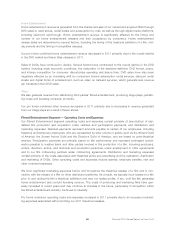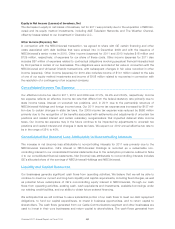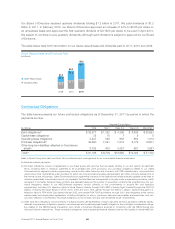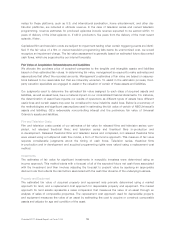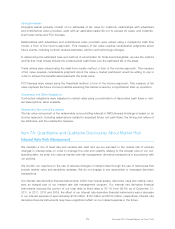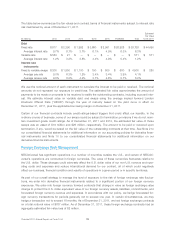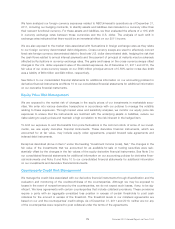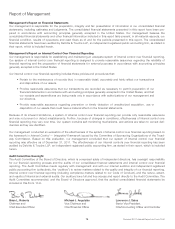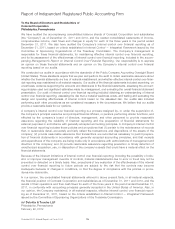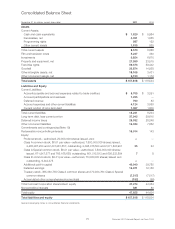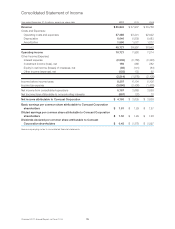Comcast 2011 Annual Report Download - page 70
Download and view the complete annual report
Please find page 70 of the 2011 Comcast annual report below. You can navigate through the pages in the report by either clicking on the pages listed below, or by using the keyword search tool below to find specific information within the annual report.
Valuation and Impairment Testing of Cable Franchise Rights
Our largest asset, our cable franchise rights, results from agreements we have with state and local govern-
ments that allow us to construct and operate a cable business within a specified geographic area. The value
of a franchise is derived from the economic benefits we receive from the right to solicit new customers and to
market new services, such as advanced video services and high-speed Internet and voice services, in a
particular service area. The amounts we record for cable franchise rights are primarily a result of cable system
acquisitions. Typically when we acquire a cable system, the most significant asset we record is the value of
the cable franchise rights. Often these cable system acquisitions include multiple franchise areas. We cur-
rently serve approximately 6,400 franchise areas in the United States.
We have concluded that our cable franchise rights have an indefinite useful life since there are no legal, regu-
latory, contractual, competitive, economic or other factors which limit the period over which these rights will
contribute to our cash flows. Accordingly, we do not amortize our cable franchise rights but assess the carry-
ing value of our cable franchise rights annually, or more frequently whenever events or changes in
circumstances indicate that the carrying amount may exceed the fair value (“impairment testing”). We esti-
mate the fair value of our cable franchise rights primarily based on a discounted cash flow analysis that
involves significant judgment. When analyzing the fair values indicated under the discounted cash flow mod-
els, we also consider multiples of operating income before depreciation and amortization generated by
underlying assets, current market transactions and profitability information.
If we were to determine that the value of our cable franchise rights was less than the carrying amount, we
would recognize an impairment charge for the difference between the estimated fair value and the carrying
value of the assets. For purposes of our impairment testing, we have grouped the recorded values of our
various cable franchise rights into our Cable Communications divisions or units of account. We evaluate the
unit of account periodically to ensure our impairment testing is performed at an appropriate level.
Since the adoption of the accounting guidance related to goodwill and intangible assets in 2002, we have not
recorded any significant impairment charges to cable franchise rights as a result of our impairment testing. A
future change in the unit of account could result in the recognition of an impairment charge.
We could also record impairment charges in the future if there are changes in long-term market conditions, in
expected future operating results, or in federal or state regulations that prevent us from recovering the carry-
ing value of these cable franchise rights. Assumptions made about increased competition and economic
conditions could also impact the valuations used in future annual impairment testing and result in a reduction
of fair values from those determined in the July 1, 2011 annual impairment testing. The table below illustrates
the impairment related to our Cable Communications divisions that would have occurred had the hypothetical
reductions in fair value existed at the time of our last annual impairment testing.
Percent Hypothetical Reduction in Fair Value and Related Impairment
(in millions) 10% 15% 20% 25%
Northeast Division $ — $ (492) $ (1,842) $ (3,192)
Central Division — — — (576)
West Division — — — (423)
$ — $ (492) $ (1,842) $ (4,191)
Comcast 2011 Annual Report on Form 10-K 68



